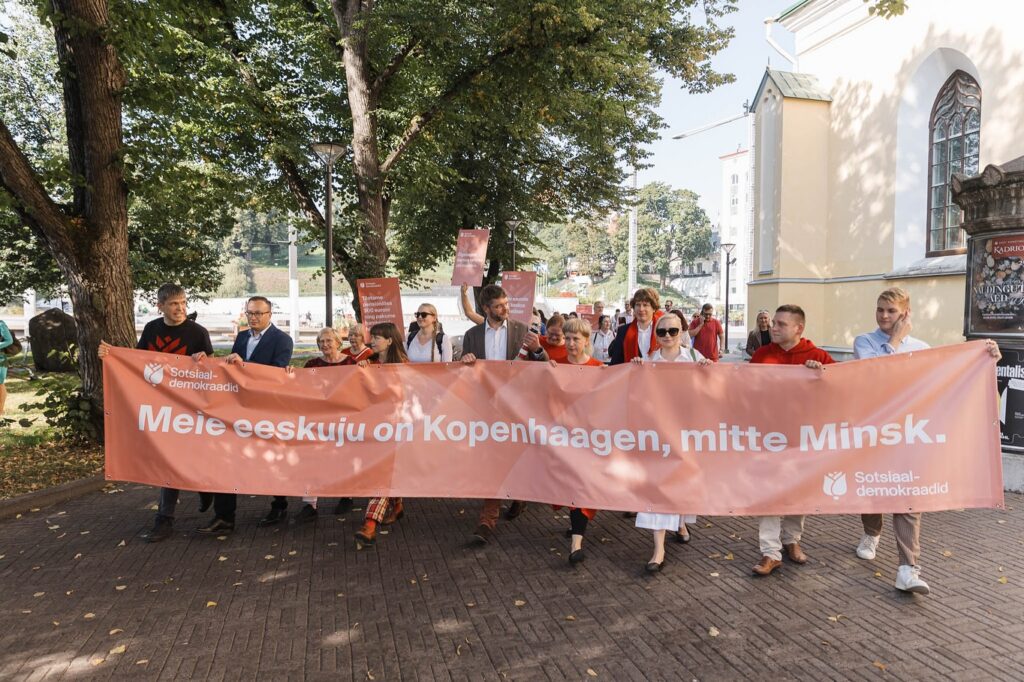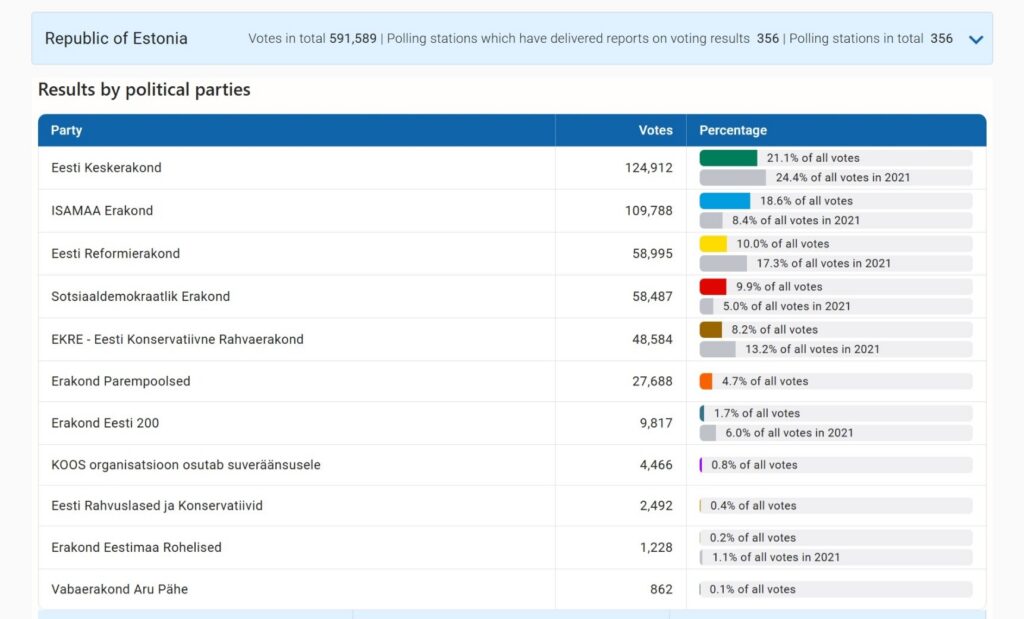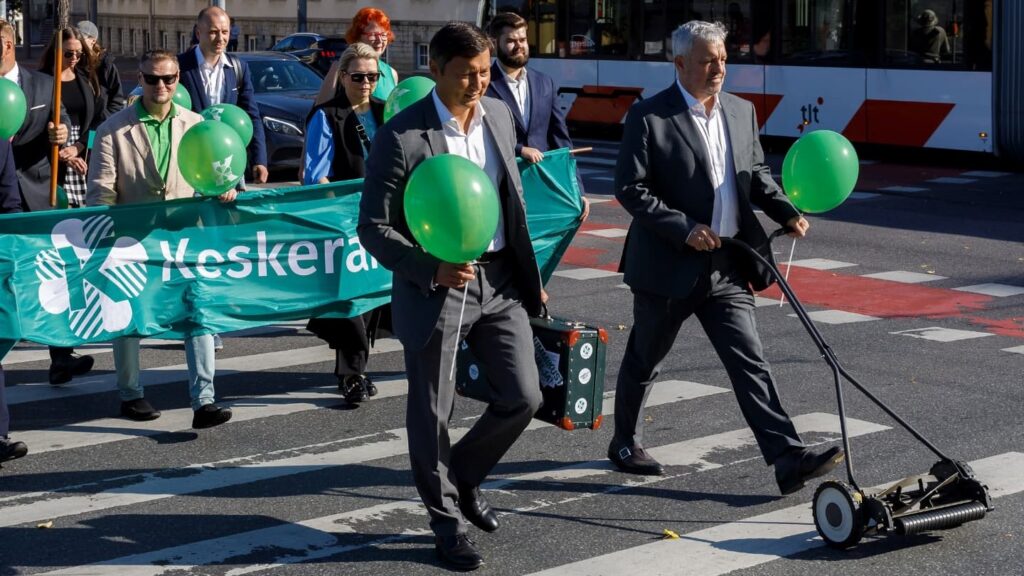Estonia’s local elections on 19 October reshaped the country’s political map, returning the Centre Party as the biggest single winner nationwide and in Tallinn – but handing control of most regional cities to the conservatives of Isamaa.
Held every four years, the elections decide who governs Estonia’s 79 municipalities. Mayors are chosen not by direct vote but by city councils, which means coalition talks often matter more than the results themselves.
In the capital, Mihhail Kõlvart’s Centre Party once again finished first, taking 41.3 per cent of the vote and 37 of the council’s 79 seats – three short of an outright majority. Kõlvart himself drew 26,531 personal votes, the highest of any candidate in the country. Yet despite the scale of his win, the party may remain outside power: rivals are already negotiating to keep him there.
The populist-nationalist EKRE, once seen as Centre’s likely ally, failed to cross the threshold and won no seats in Tallinn. That leaves only two possible partners – the conservative Isamaa, which took 11 seats, or the liberal-conservative Parempoolsed, with six. Both have distanced themselves from Kõlvart’s social-welfare-heavy agenda.
“The negotiations are between four parties right now,” Kõlvart told the Estonian portal Delfi the morning after the vote. “Of course, the Centre Party will also make its own proposals.”

What the parties offered Tallinn
The campaign in the capital was framed around what kind of city Tallinn should be: Nordic in efficiency, global in outlook, or simply liveable for those who already call it home.
The Centre Party, which has long relied on working-class and Russian-speaking districts such as Lasnamäe, promised social stability – more affordable housing, cheaper public transport and a careful, inclusive transition to all-Estonian schooling.
The Social Democrats (SDE) positioned themselves as the city’s progressive engine, pledging safer streets, greener public spaces, better childcare and what they called a “Copenhagen, not Minsk” approach to urban life. The slogan resonated: they won 17 seats, their best result in the capital in over a decade.

The Reform Party, Estonia’s main liberal force, took a beating – just eight seats, down seven from the previous election – but its campaign remained polished and ambitious. It promised to turn Tallinn into a “Nordic capital of smart governance,” pledging to cut red tape, modernise city administration and improve the quality of public services through digital tools.
The conservatives of Isamaa campaigned on restoring order and transparency in city management, tightening budgets and speeding up construction permits, while the newcomer Parempoolsed appealed to pro-business voters with promises of deregulation, less bureaucracy and “results over rhetoric.”

Eesti 200, which had one of the most future-minded programmes – clean energy, circular economy, international schools and an “expat ambassador” network – failed to meet the five per cent threshold in Tallinn, polling just 2.8 per cent.
A coalition forming against the winner
For Jevgeni Ossinovski, the Social Democratic mayor who took power in 2024 after leaving a short-lived coalition with the Centre Party, the message from voters was clear. “All four parties received their votes as a signal that the Centre Party should not return to city power,” he said.
Maris Lauri, a former finance minister heading the Reform list, agreed: “It’s important to form an Estonian-minded coalition of the four remaining parties – and that seems entirely possible.”

Lavly Perling, the leader of Parempoolsed, confirmed that her party would “listen to everyone” but warned that there was “very little common ground” with Kõlvart’s Centre Party. “Free handouts have no place; the transition to Estonian-language education is non-negotiable,” she said.
If these parties hold together, Tallinn may once again be run by a coalition formed largely to exclude the party that won.

Across Estonia: Centre first, Isamaa ascendant
Nationally, the Centre Party took 21.1 per cent of the vote, ahead of Isamaa on 18.6 per cent, Reform on 10 per cent, the Social Democrats on 9.9 per cent and EKRE on 8.2 per cent. Parempoolsed followed with 4.7 per cent, while the governing Eesti 200 collapsed to 1.7 per cent – an unprecedented fall for a party still in national office.
For Kõlvart, whose party was left bruised by the 2023 split with former prime minister Jüri Ratas, the result was proof of survival. “A year ago, the experts said the Centre Party would collapse,” he told supporters. “Look at the results – we are number one in the country.”
Yet while Centre led the national vote, the map of actual city halls told another story. Isamaa swept through Estonia’s regions, winning in Tartu – the country’s intellectual heart – as well as in Pärnu, Viljandi, Haapsalu, Paide and Rakvere. Its campaign mixed civic competence with conservative reassurance: support for families, local enterprise and Estonian-language schooling.
“Estonia needs change,” party leader Urmas Reinsalu declared on election night. “After this election, Estonian politics will not be the same.”

For the governing Reform Party, it was a sobering night. Its share fell to just 10 per cent nationwide, its worst local result in decades, eroding its claim to managerial competence. Eesti 200’s implosion – down to fewer than 10,000 votes across the country – deepened the sense of a political centre losing gravity.
What the results reveal
Three decades after regaining the independence, Estonia’s democracy remains both disciplined and unpredictable. The local elections reaffirmed trust in the system but also signalled fatigue with political elites. Nearly a quarter of all votes went to local electoral coalitions and independents – a reminder that, in Estonia, communities still carry more weight than ideology.
In Tallinn, the capital that sells Estonia’s image to the world, the contest is not only about power but about tone. Should it be a city of cautious stability, as the Centre Party promises; a European-minded hub open to newcomers, as the Social Democrats and Reform envisage; or a disciplined, fiscally conservative capital, as Isamaa and Parempoolsed propose?
Kõlvart, who once compared politics to martial arts, summed up the paradox himself. “You can lose the first, second and third rounds,” he said. “But when the last one comes, you stand up and win.”
This autumn, he stands first again – but the final round, as always in Estonia’s politics, will be decided at the negotiating table.


